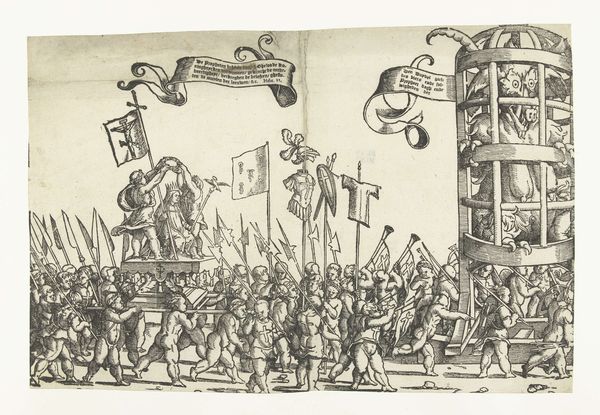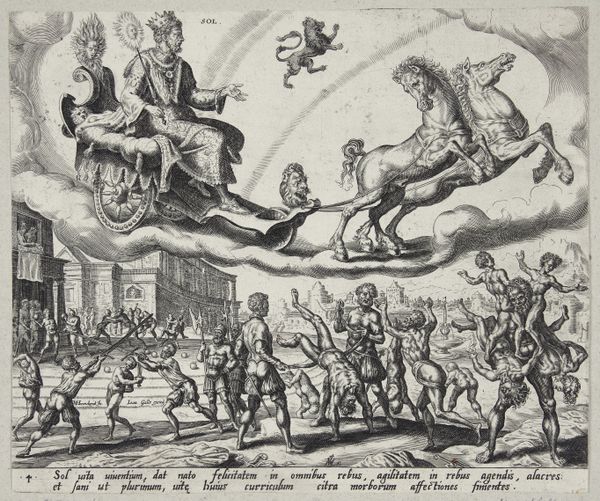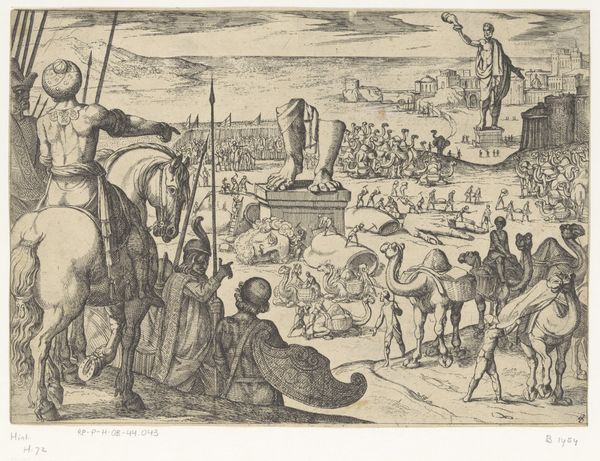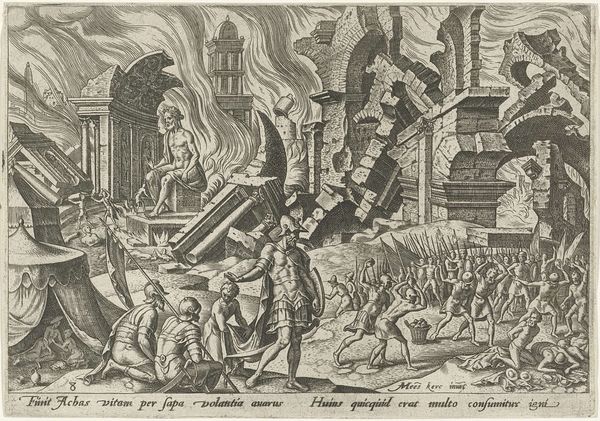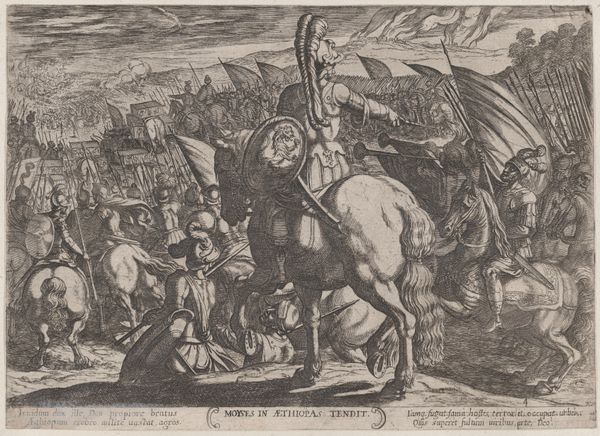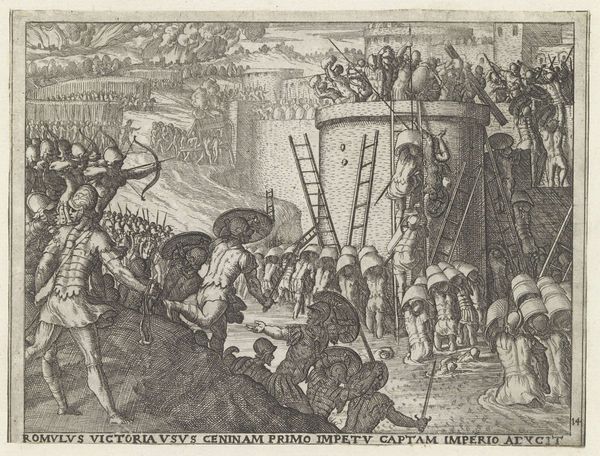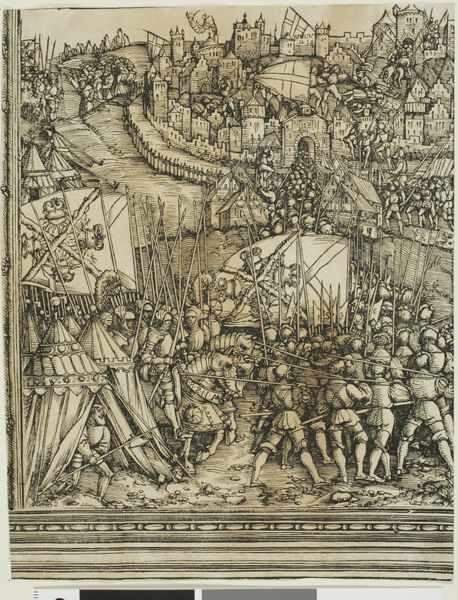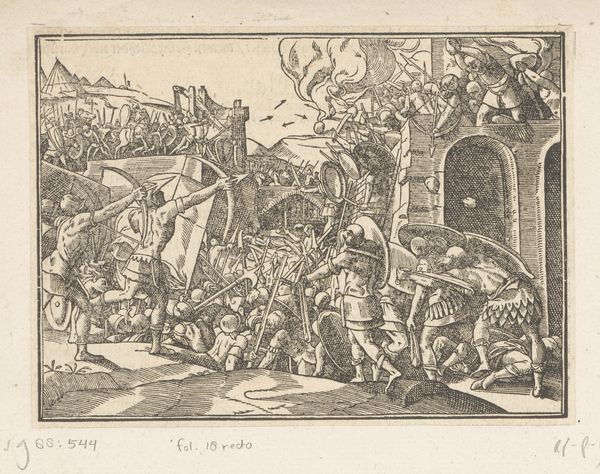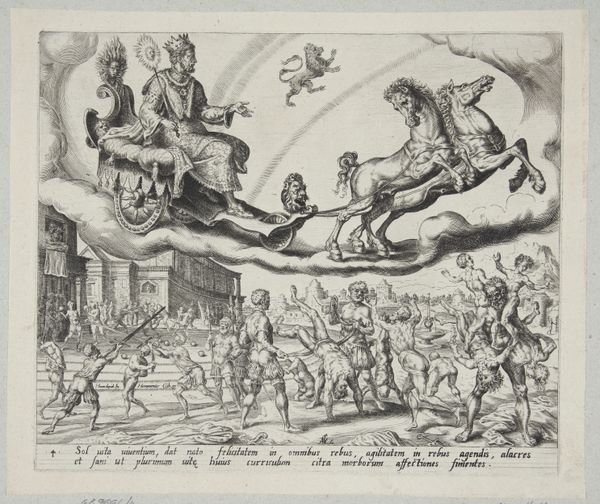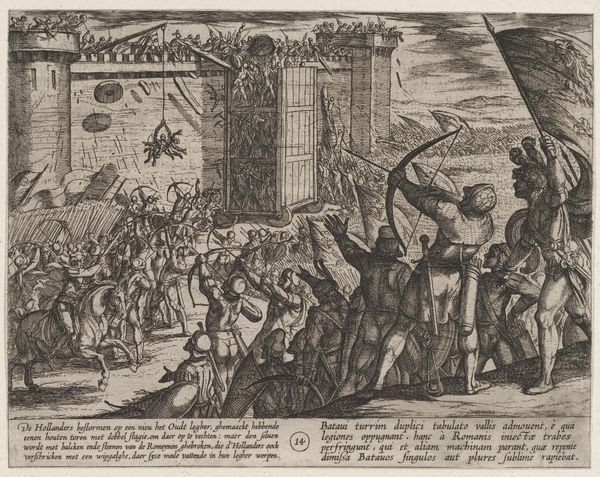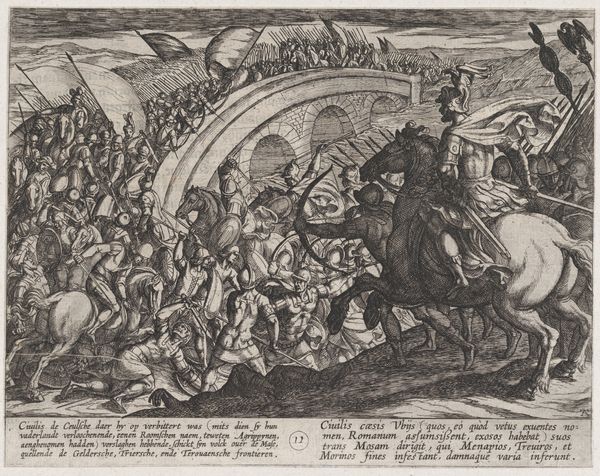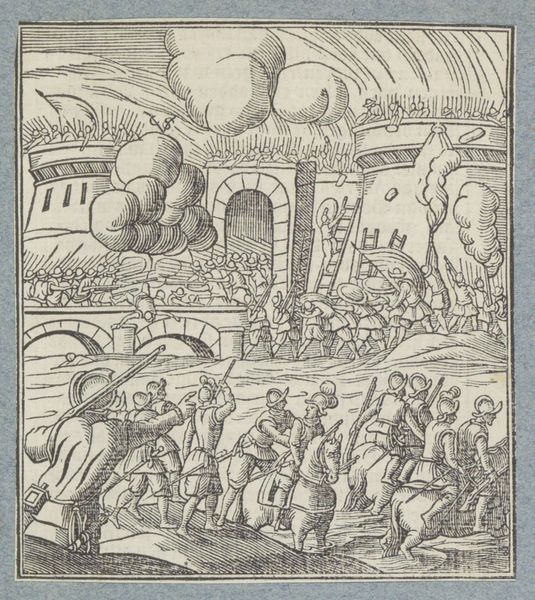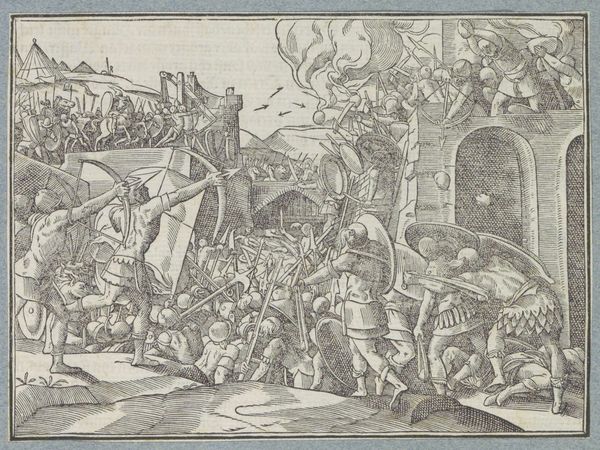
drawing, print, ink, engraving
#
drawing
#
narrative-art
#
pen drawing
# print
#
figuration
#
11_renaissance
#
ink
#
child
#
northern-renaissance
#
engraving
Dimensions: height 273 mm, width 750 mm
Copyright: Rijks Museum: Open Domain
Editor: This engraving, “Kinderkruistocht” or “Children’s Crusade,” from around 1527, is by Monogrammist LIW. The whole scene feels quite strange—lots of children marching with flags, pulling some sort of contraption with figures inside. What is your interpretation of it? Curator: Well, considering the socio-political climate of the Renaissance, this "Children's Crusade" likely alludes to a real historical event, though with a satirical twist. What's immediately striking is the depiction of children seemingly mimicking the trappings of adult power and religious fervor. Editor: Mimicking? What do you mean? Curator: Look closely. The procession includes religious icons, banners, and even a caged structure—all common features of religious and political parades of the era. But the participants are children. The image questions the adults of the day, who put the children in harm’s way. Are they leading, or being led? Editor: I see… It’s like they’re acting out a charade. It feels critical of religious displays. Curator: Exactly. Think about the Reformation. The piece could critique the unquestioning faith demanded of the populace, symbolized by the innocence and manipulability of children. It speaks volumes about the power dynamics within society and the institution of the Church at that time. Editor: So the artist used this parade to show how religion manipulates society? I had not looked at it that way. Curator: And note how the image also underscores the fragility of this so-called “crusade.” The pen strokes feel delicate, emphasizing the vulnerability of these children engaged in a serious activity. Editor: This piece holds a strong mirror to the adult world by contrasting it with childlike figures. I learned to consider art as more than just what's visually apparent! Curator: Absolutely. Context is everything when understanding Renaissance art and this era's focus on critiquing social and religious conventions.
Comments
No comments
Be the first to comment and join the conversation on the ultimate creative platform.
